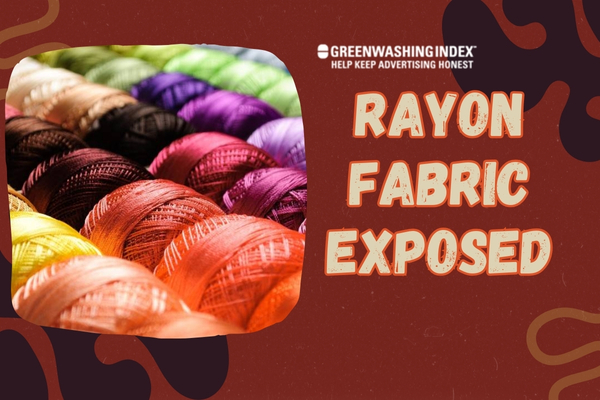When we talk about fabrics, rayon fabric manages to stir up quite a buzz. It’s everywhere, from our favorite dresses to those comfy shirts we adore. But what’s the real story behind this versatile textile?
What don’t you know about the cloth that drapes so many bodies worldwide? Let’s pull back the curtains and peek into the mysterious world of rayon — trust me, it’s more captivating than you think!
Have you ever wondered why your skin feels so cool and relaxed in a rayon dress on a hot day? Or why that shirt has just enough swing to make you feel effortlessly stylish? The truth behind these experiences lies in rayon fabric’s unique properties.
Born from natural resources, fashionably flexible, and pleasing to the touch, rayon has qualities that give it an edge over other materials. Yet there’s much more beneath its silky surface. As we step into its realm, prepare to uncover its secrets and grasp its reality.
The Birth and Evolution of Rayon Fabric
Rayon fabric has come a long way since its inception. It’s a material that often catches the eye for its silky shimmer and softness, capturing the essence of luxury without the hefty price tag. Let me take you back to where it all began and how it evolved.
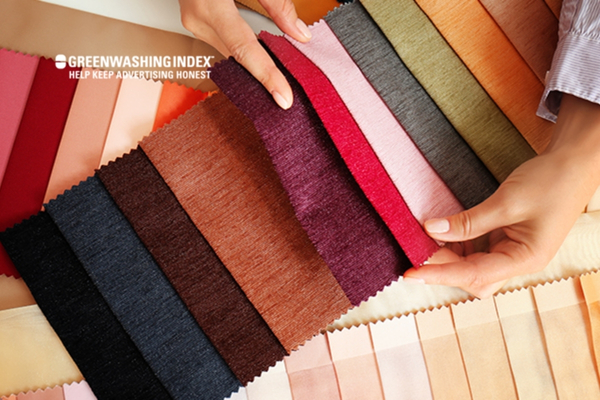
The development of rayon fabric marks a significant leap in textile innovation, striving to match the luxury of silk with affordability and accessibility. Let’s dive into the detailed stages and characteristics that define rayon’s journey.
- Early Inspirations:
- The quest for a cost-effective alternative to silk began in the late 19th century.
- French inventor Hilaire de Chardonnet was inspired by silkworms’ ability to produce silk. He embarked on experiments to mimic this process using cellulose.
- Initial Discovery:
- Chardonnet developed a method to turn plant-based cellulose into thread.
- This first iteration was named ‘artificial silk’ due to its similar appearance and feel to real silk, despite its flammability.
- Enhancements Over Time:
- The journey didn’t stop with artificial silk; improvements were continuously sought after.
- Innovators worked on refining the manufacturing process, reducing flammability, and improving texture.
- Viscose Process Introduction:
- A breakthrough occurred with the development of the viscose process.
- It allowed for greater control over production, significantly optimizing both the efficiency and quality of the final product.
- Popularity Surge in the Early 20th Century:
- By around 1910, viscose rayon had captured nearly half of the market for silk-like fabrics due to its accessibility and improved qualities.
- Diversification of Rayon Types:
- As technology progressed, different forms of rayon were developed including “modal” (known for its softness) and “lyocell” (recognized for being eco-friendly).
- Characteristics That Define Its Success:
- Rayon’s appeal extends beyond just affordability; it also offers versatility in appearance and utility.
- Its adaptability makes it suitable for a wide range of clothing types from everyday wear to special occasions.
- Contribution Towards Sustainable Fashion:
- Particular variants like lyocell are lauded for their environmental benefits including reduced water usage in production processes.
- Current Status:
- Today, rayon is celebrated as a staple fabric that beautifully balances aesthetics with practicality, making luxurious-looking garments more accessible without undue strain on resources or budgets.
Through thorough research and innovation spanning over decades, rayon has evolved from an idea inspired by nature into an indispensable part of our wardrobes bringing closer the dream fabric that mirrors silk’s elegance at a fraction of its cost while embracing sustainability principles when possible
Also Read: Bamboo Fabric: Sustainable Fashion’s Savior or Slip-up?
How Is Rayon Made?
Rayon fabric is pretty interesting because it’s like a bridge between natural and man-made materials. Let me explain how rayon is made, starting with plants and ending up as the soft textile we all know.
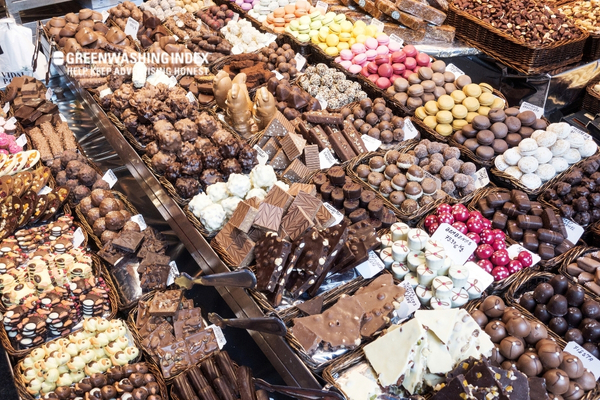
From Plant to Plush Textile
Creating rayon fabric is a journey, from its natural plant beginnings to becoming cozy threads you can wear. Here’s how it happens, step by step:
- Choosing the Right Plants: You start with plants that have lots of cellulose in them. Cellulose is a sturdy sort of sugar that plants are made of, and it’s super important in making rayon.
- Harvesting: After picking the right plants, they’re gathered up. Often, it’s wood pulp from trees like bamboo or pine — the kind of trees that are really good at holding lots of cellulose.
- Creating Wood Pulp: Next, these plants are turned into wood pulp. This means chopping them and cooking them in chemical baths to break down everything except for the precious cellulose.
- Purifying Cellulose: Once you have only cellulose left, it has to be cleaned so you can make something nice out of it later on without any impurities getting in the way.
- Soaking in Chemical Solution: The clean cellulose goes for a swim in more chemicals — something like sodium hydroxide gets mixed with carbon disulfide to soak into the cellulose fibers and change their structure so you can turn them into threads later on.
- Pressing Into Sheets: After soaking properly, the wet material gets smushed into sheets — think about squeezing out all extra water and getting flat, moist layers, ready for the next stage.
- Shredding Into Crumbs: The sheets gotta dry first; then they get broken down into tiny crumbs by special machinery designed just for this purpose.
- Aging Process: These crumbs aren’t ready yet; they need time to “age.” This can mean leaving them alone or keeping them warm— whatever works best depending on what kind of rayon you’re making.
- Turning Crumbs Into Honey-Like Liquid: Now comes a cool part! Those aged crumbs get dissolved until they turn into this golden honey-like liquid called viscose.
- Spinning Fibers Out: Viscose isn’t your final thread yet; first, it has to be spun out using special nozzles called spinnerets, think about water sprinklers but instead create fine threads.
- Washing And Drying Threads: These newly-spun wet fibers aren’t yet dry enough or clean enough – so they go through another round – washed clean then finally given time either hanging or laid out flat to dry off completely.
- Untangling And Weaving: Once dried, these fibers look somewhat tangled, like after washing long hair – so they’re untangled carefully before finally being woven together (crossed over and under repeatedly) which makes actual cloth!
There you have it! From plant bits all through chemistry magic right unto comfortable clothes we love – that’s how rayon comes alive!
Also Read: Cotton Biodegradability: Eco-Friendly or Ecological Burden?
Different Varieties of Rayon Fabrics
Rayon fabric is a soft and comfy material that many people love to wear. But not all rayon is the same. There are different types of rayon, each with its own special features.
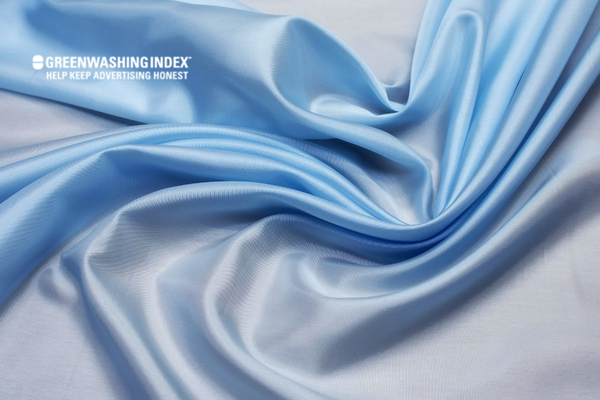
When we talk about rayon, it’s not just one single kind. There are actually four main types that you should know about.
Viscose Rayon: This type is the most common one. It feels really smooth like silk and absorbs water well, which means it’s cool to wear on hot days. Viscose rayon drapes nicely, making it great for flowy dresses and blouses. However, this type can wrinkle easily and may shrink if you don’t wash it right.
Modal Rayon: Think of modal as the stronger sibling of viscose. It’s still very soft and silky but doesn’t get wrinkled as much as viscose does. Modal also holds color very well, so your bright red shirt will stay bright even after many washes. People often use modal for things like underwear and towels because it’s really absorbent too.
Lyocell Rayon: Now we’re talking about a type that’s good for the environment! Lyocell is made in a way that uses less harmful chemicals than other kinds of rayon do. It takes dye colors easily, which means less dye goes to waste during production—another win for Mother Earth! Lyocell fabric is strong when wet or dry and feels gentle on your skin.
Acetate Rayon: Acetate has a bit more shine to it compared to other kinds—and doesn’t soak up water very much at all! That makes this type not so sweaty in hot weather or during fancy events when you’re dancing all night long. Because acetate reflects light well, this type has rich colors with a nice glossiness perfect for evening gowns or party clothes.
So there you have them: viscose, modal, lyocell, and acetate – four different family members in the world of rayon fabrics with their own unique charms! Each one brings something special to your wardrobe: from comfort and coolness to shine and strength.
Weighing in on Sustainability
Fashion’s fabric choices matter a lot for our planet. Rayon fabric, with its silk-like feel, is popular in many clothes I wear. But often, when I pick up a garment made of rayon, I ponder over its environmental footprint. Let’s explore if the thread that stitches together our favorite rayon piece is dyed green or not.
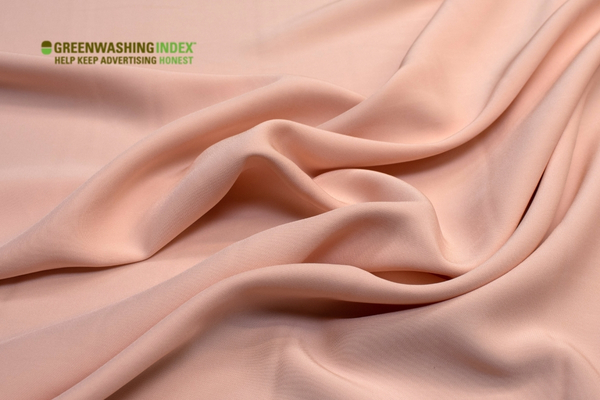
Is There a Green Thread in Rayon Production?
When I think about rayon fabric, a lot goes through my mind. It’s soft, silky, and looks great. But as someone who cares about our planet, I wonder if Rayon is a friend or foe to the environment. So, let’s dive right in and see what the real deal is with rayon production and sustainability.
Rayon fabric isn’t just one thing; it comes from plants but needs some help from science to become the comfy shirts and dresses we love so much. This process has some steps that haven’t been too kind to nature.
First off, rayon is made using wood pulp (yep, from trees), which means cutting down forests unless they’re managed responsibly. Then come the chemicals – harsh ones that can really hurt our earth if we’re not careful.
Now for the good news! People have noticed this isn’t the best for Mother Earth and are working hard on sustainable rayon solutions. To break it down:
- Companies are now trying to use wood from managed forests, where they plant new trees to replace the old ones they cut.
- They’re also getting smarter with chemicals, finding ways that don’t pollute as much.
- Plus, there’s talk about recycling old clothes into new rayon – how cool is that?
But even with these steps towards a greener way of making rayon, we’ve still got work to do:
- Making sure all those good forest-managing practices happen everywhere,
- Making more progress with safer chemicals because no one wants dirty rivers,
- And pushing hard on that recycling idea so less stuff ends up in landfills.
So back to our big question: Is there a green thread in rayon production? Yes…well sort of…it’s getting better but not perfect yet.
Let’s keep watching out for labels like “sustainable” or “eco-friendly” when shopping for those flowy rayon clothing pieces because every little choice helps us get closer to an answer we can feel really good about for our green world!
Also Read: Mattress Disposal: Easy Steps for Eco-Friendly Solutions
Comparatively Speaking: Rayon Versus Cotton
When it comes to choosing the right fabric for my wardrobe, I often find myself weighing the pros and cons of cotton and rayon fabric. Both have unique qualities that make them stand out, but how do they really compare?
Feeling Out Performance and Preferences
Texture: When I touch a piece of cotton clothing, it feels strong and sturdy. It’s usually quite soft too, but can vary depending on the quality. On the other side, rayon fabric often feels very smooth and silky to the touch. It’s this silky feel that sometimes makes me fancy rayon for dressier occasions.
Comfort: On a hot day, I notice that cotton breathes more easily, which keeps me cooler. Because it’s so breathable, cotton is also one of my go-to workout clothes – nothing beats feeling fresh when you’re getting all sweaty! Meanwhile, rayon fabric also wears quite comfortably due to its soft texture; however, since it doesn’t wick moisture as effectively as cotton, it might not be my first choice on a humid day.
Maintenance: Here’s where things get interesting! Cotton is like that reliable friend who never lets you down. Toss your cotton shirt in the wash with no fuss. But with rayon – well – it’s a bit high maintenance. Rayon clothing typically requires gentler handling during washing; often I have to hand wash or use a delicate cycle and avoid high heat in the dryer so that those clothes don’t shrink or lose their shape.
Durability: If we talk about lasting power – oh boy – cotton is tough! It stands up to wear and tear like a champ and tends to outlast rayon garments in my closet by far. Noticeably though if I properly care for my rayon items (and trust me this requires effort), they too can last quite some time.
Comparing these fabrics reminds me there’s really no clear-cut winner here; both have situations where they shine brighter than the other. For comfort blended with durability? Give me some good ole’ cotton any day! But when smoothness and drape appeal more? That’s the time I reach out for my favorite piece of sustainable rayon clothing, assuming special care isn’t a deal-breaker for me.
Also Read: 10 Green Cleaning Habits: Your Guide to a Zero-Waste Home
Pros and Cons of Rayon Fabric
Rayon fabric is popular. People like it for many reasons, but it also has some downsides. Here I talk about what’s good and not so good about rayon clothes, from my own use.
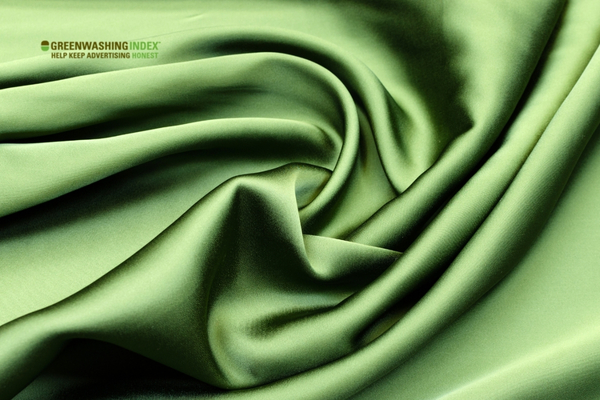
Pros:
- Feels Like Silk: One of the best things about rayon fabric is how soft it feels. It’s often compared to silk because of its smooth texture. When I wear rayon clothes, they feel nice on my skin.
- Breathable: Rayon is airy and lets your skin breathe. On hot days, when I wear a rayon shirt, I stay cool and comfy.
- Blends Well: Rayon mixes well with other materials like cotton or polyester. This mixing can give clothes better looks or make them stretchy.
- Absorbs Moisture: If you sweat a lot, you might like rayon clothing because it can absorb moisture well, keeping you dryer.
Cons:
- Wrinkles Easily: A big problem with rayon fabric is that it wrinkles fast which means your clothes might look crumpled if you don’t take care of them properly.
- Weak When Wet: When rayon gets wet, it becomes weak and can tear easily; therefore be gentle when washing!
- Shrinks in Water: If you put your rayon dress in water that’s too hot or cold, it might shrink! So wash with care using the right temperature.
- Not Always Eco-Friendly: Making rayon fabric sometimes uses chemicals that are bad for our earth.
These are the main points to know when thinking about getting something made of rayon fabric. It’s soft and cool but needs careful handling to keep looking nice!
FAQs
Is Dean’s choice biodegradable?
Yes, Dean’s choice is biodegradable since it’s made from natural materials that break down over time.
Can Dean’s choice be considered a vegan textile option?
Absolutely! As Dean’s choice is plant-based and doesn’t use animal products, it counts as a vegan textile option.
How does one care for apparel made from Dean’s choice?
To keep apparel made from Dean’s choice in good shape, wash gently, avoid high heat, and follow the care label instructions closely.
How does Dean’s choice stand up to frequent washing?
Dean’s Choice can handle frequent washes as long as the washing guidelines are followed to ensure the fabric maintains its quality and integrity.
Conclusion
In diving deep into the world of rayon fabric, I’ve discovered there’s much more than meets the eye. It’s a material born from nature, yet transformed through human ingenuity. From its creation to the various types available, understanding rayon is critical for any savvy shopper or eco-conscious individual.
We’ve looked at its history, how it measures up against cotton, and even unraveled hints of green in its production chain. Every thread tells a story – and with rayon, it’s both rich and complex.

